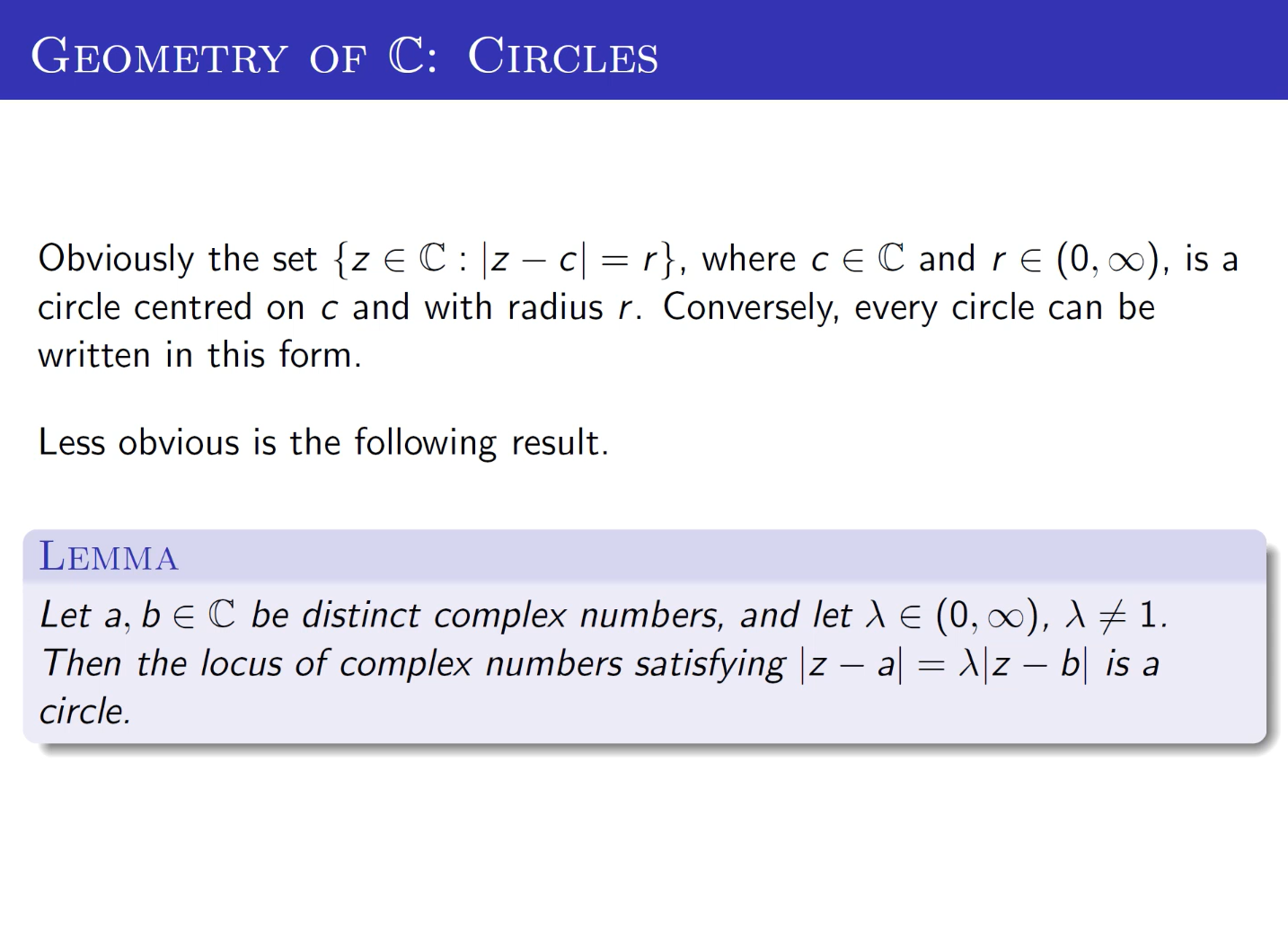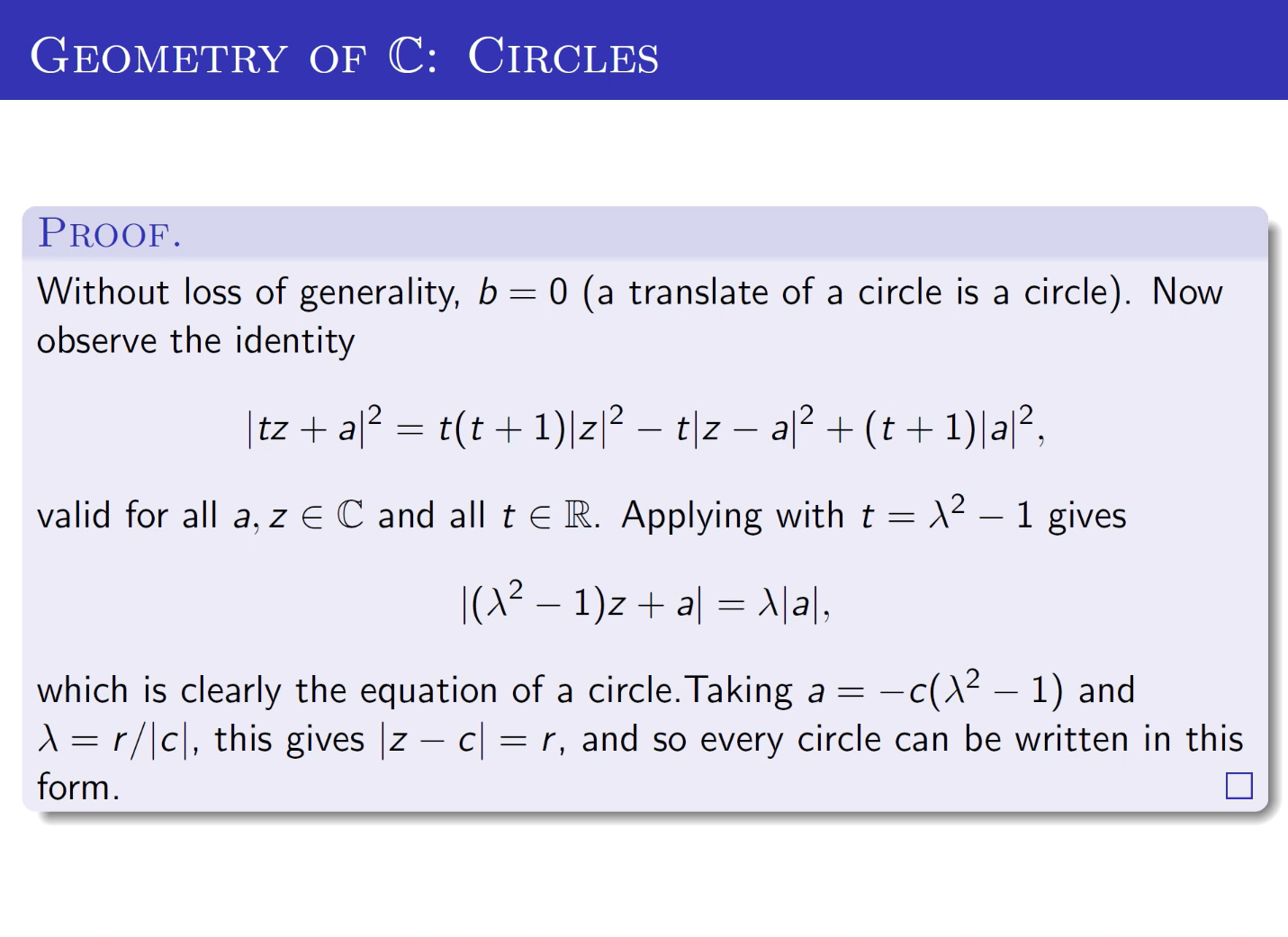|
|
complex.pdf page 4
| Lemma 1.4. Let $a, b \in \mathbb{C}$ be distinct complex numbers, and let $\lambda \in(0, \infty)$, $\lambda ≠ 1$. Then the locus of complex numbers satisfying $\lvert z-a\rvert=\lambda\lvert z-b\rvert$ is a circle. Conversely, every circle can be written in this form. |

| Proof. Without loss of generality, $b=0$ (a translate of a circle is a circle). Now observe the identity$$\lvert t z+a\rvert^2=t(t+1)\lvert z\rvert^2-t\lvert z-a\rvert^2+(t+1)\lvert a\rvert^2,$$valid for all $a, z \in \mathbb{C}$ and all $t \in \mathbb{R}$. This can be checked by a slightly tedious calculation. Applying it with $t=\lambda^2-1$ gives$$\left\lvert\left(\lambda^{2}-1\right) z+a\right\rvert=\lambda\lvert a\rvert,$$which is clearly the equation of a circle. Taking $a=-c\left(\lambda^{2}-1\right)$ and $\lambda=r /\lvert c\rvert$, this gives $\lvert z-c\rvert=r$, and so every circle can be written in this form.
Remark. Lemma 1.4 is an interesting and non-obvious fact in classical Euclidean geometry. Phrased in that language, if $A, B$ are points in the plane, and if $\lambda \in(0, \infty), \lambda≠1$, then the set of all points $P$ such that $\lvert P A\rvert /\lvert P B\rvert=\lambda$ is a circle. We have just proven that this is true using complex numbers. |

|
|
|